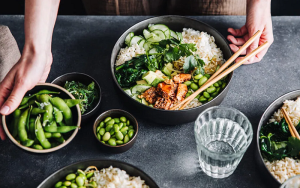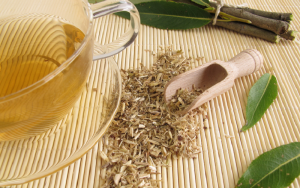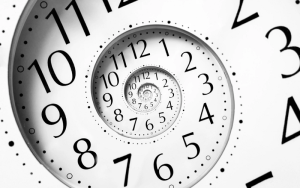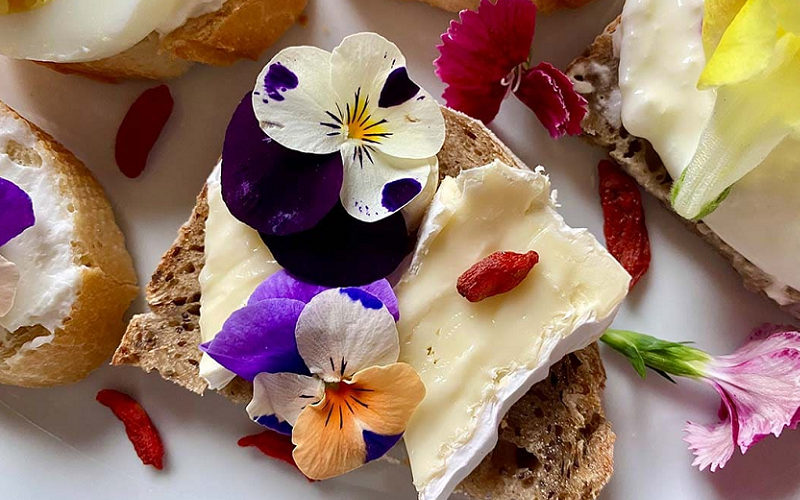
Edible flowers, once a staple in Victorian cooking, are making a dazzling comeback in modern kitchens, infusing our meals with color, flavor, and a plethora of health benefits. But what exactly are edible flowers? How do they add to the nutritional value of our meals? And more importantly, how can you incorporate them into your daily diet? Here we answer these questions, and more, as we examine the vibrant world of edible flowers, where the cuisine is as visually pleasing as it is nourishing.
Contents
The Fascinating World of Edible Flowers
Diving into the world of edible flowers can feel like stepping into a vibrant botanical garden. The variety is astonishing, the colors are mesmerizing, and the health benefits are diverse and substantial. But, just like every other garden, it’s crucial to know which flowers are safe to consume and which ones are not.
Definition of Edible Flowers
Edible flowers are flowers that are safe to eat. They come from various plants, herbs, vegetables, and even trees. It’s important to note that not all flowers are edible, and some can be quite toxic if ingested. The term “edible flowers” is reserved for those flowers that are not only safe to eat but also provide nutritional value.
Historical Use of Flowers in Cooking
Flowers have been used in cooking for thousands of years across different cultures. Ancient Romans used violets in their recipes, while the Greeks loved their salads with marigold petals. Victorian England saw a surge in the use of flowers in cooking, with roses and violets adorning cakes and pastries. In the East, chrysanthemums have been a part of traditional Chinese medicine and cuisine for centuries, while squash blossoms are a staple in Mexican cuisine. These traditions underline the rich, global heritage of edible flowers, something we’re now rediscovering.
Varieties of Edible Flowers
There are over 100 varieties of edible flowers, each with its unique flavor, texture, and nutritional profile. Some of the most popular edible flowers include nasturtiums, violets, roses, pansies, borage, calendulas, dandelions, and lavender. Each of these offers a distinct flavor, from the peppery taste of nasturtiums to the sweet and aromatic flavor of roses.
General Guidelines for Safe Consumption
Safety is paramount when it comes to consuming edible flowers. It’s crucial to correctly identify the flower before eating, as some flowers can be poisonous. Ensure you only consume flowers grown without pesticides or harmful chemicals. If you suffer from allergies, start by eating small amounts of edible flowers as they can sometimes trigger allergic reactions. Always wash your edible flowers thoroughly before consumption to get rid of any dirt or bugs. Lastly, only consume the petals in most cases, as other parts of the flower, like the stamen and pistil, may not be edible.
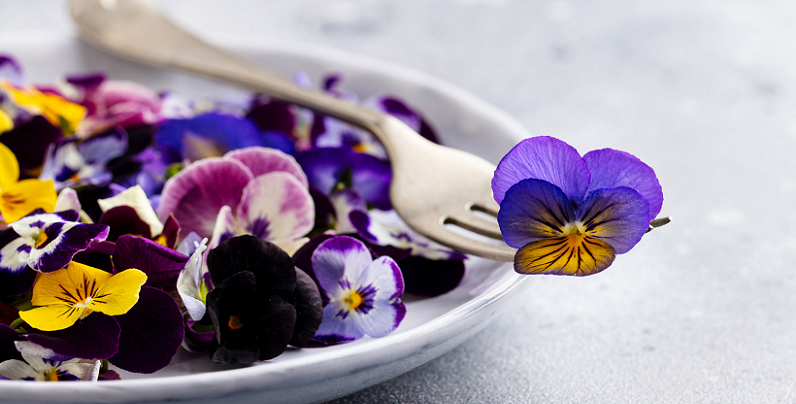
Nutritional Value of Edible Flowers
While the unique flavors and aesthetic appeal of edible flowers are often the primary focus, their nutritional content shouldn’t be overlooked. They pack an impressive nutritional punch, providing essential vitamins, minerals, and other beneficial compounds.
Overview of Nutritional Content
Many edible flowers are low in calories but high in nutrients. They contain a variety of vitamins and minerals necessary for optimal health. These include vitamins A, C, and E, as well as minerals like potassium and iron. Moreover, some flowers are rich in fiber, which aids digestion and provides a sense of fullness, aiding in weight management [1].
Detailed Analysis of Vitamins and Minerals Present
Edible flowers’ vitamin and mineral content can significantly contribute to a balanced diet. Let’s explore these nutrients in detail:
- Vitamin A: Found abundantly in flowers like marigold and dandelion, vitamin A supports eye health, immune function, and cell growth.
- Vitamin C: A powerful antioxidant, vitamin C is plentiful in flowers like nasturtiums and roses. It aids in skin health, immune function, and collagen production.
- Vitamin E: Found in sunflower petals and other edible flowers, vitamin E has antioxidant properties and contributes to skin and eye health.
- Iron: Edible flowers like parsley blossoms and dandelions are a good source of iron, a mineral crucial for red blood cell production and oxygen transportation in the body.
- Potassium: Found in a variety of edible flowers, potassium is necessary for heart and muscle function, as well as maintaining fluid balance in the body.
Other Health Benefits
Apart from being nutrient-dense, edible flowers offer other health benefits:
- Antioxidant Properties: Edible flowers are rich in antioxidants, compounds that fight free radicals and reduce oxidative stress in the body, thereby lowering the risk of chronic diseases [2].
- Digestive Health: Flowers like chamomile and calendula aid in digestion and can alleviate symptoms of gastrointestinal discomfort.
- Anti-Inflammatory Benefits: Many edible flowers, such as roses and lavender, have anti-inflammatory properties, which can help alleviate symptoms of conditions like arthritis.
- Other Potential Health Benefits: Ongoing research suggests that edible flowers may offer other health benefits, including supporting heart health, boosting immune function, and even exhibiting anti-cancer properties.

Popular Edible Flowers and Their Specific Nutritional Benefits
Just as no two flowers look alike, no two edible flowers offer the same nutritional profile. Here, we’ll spotlight some popular edible flowers, highlighting their unique flavors and nutritional benefits.
Nasturtiums
Nasturtiums are easy to recognize with their bright orange, yellow, and red blossoms. Their flavor is somewhat peppery, akin to watercress. Nasturtiums are packed with vitamin C, aiding in immune health and providing antioxidant benefits. They’re also a source of manganese, which supports bone health and blood sugar regulation.
Calendulas
Also known as “pot marigolds,” calendulas boast bright yellow and orange petals with a slightly spicy taste. They are rich in antioxidants, especially flavonoids and carotenoids, which promote skin health and protect against cellular damage. Calendulas also have potential anti-inflammatory and antiviral properties [3].
Violets
With their vibrant purple color and sweet floral taste, violets are a popular choice for desserts and salads. They contain vitamin C and a substantial amount of vitamin A, promoting eye health, boosting the immune system, and providing antioxidant benefits.
Pansies
Pansies come in various colors and have a mild, minty flavor. They’re a good source of antioxidants and offer anti-inflammatory benefits. Pansies also contain a fair amount of vitamin C.
Borage
Borage, or “starflower,” has beautiful blue petals with a taste reminiscent of cucumber. These flowers are rich in gamma-linolenic acid, a type of fatty acid that supports skin health, reduces inflammation, and may help alleviate symptoms of various health conditions, including arthritis and premenstrual syndrome.
Roses
Roses are not just a visual and aromatic delight; they’re also nutritionally robust. Their petals, which can vary in flavor based on the type and soil conditions, often have a sweet, fruity taste. Roses are rich in vitamin C, polyphenols, and anthocyanins, offering strong antioxidant and anti-inflammatory benefits [4].
Dandelions
Dandelions, often overlooked as common yard weeds, are a powerhouse of nutrients. Their slightly bitter petals are high in vitamins A and K, calcium, and iron. They’re also packed with potent antioxidants.
Lavender
Known for its calming scent, lavender also holds culinary value. Its sweet, slightly minty flavor pairs well with both sweet and savory dishes. Lavender is a good source of calcium and vitamin A, and it is also noted for its potential calming and sleep-promoting effects.
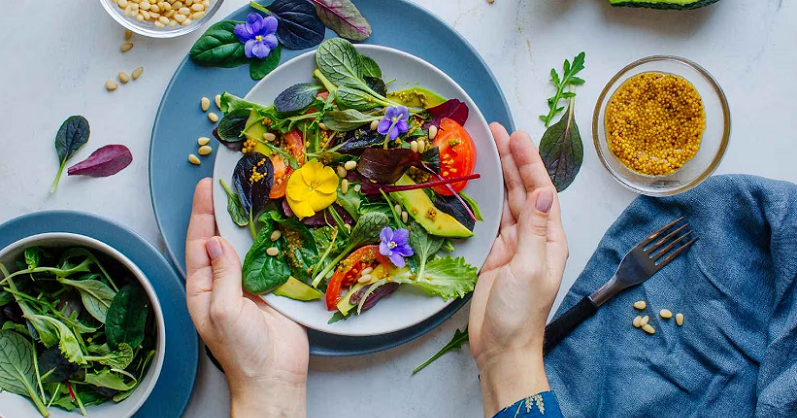
Practical Ways to Incorporate Edible Flowers into Your Diet
Once you’ve familiarized yourself with the edible flowers’ nutritional profiles, the next exciting step is bringing them into your kitchen. There are numerous creative and delicious ways to incorporate these colorful gems into your meals.
Edible Flower Salads
One of the simplest ways to enjoy edible flowers is by adding them to your salads. Petals of flowers like nasturtiums, violets, and calendulas can beautifully complement a variety of greens, adding a burst of color and nuanced flavors. Plus, you’ll get an extra dose of vitamins and minerals.
Using Edible Flowers in Cooking
Edible flowers can be a flavorful and aesthetically pleasing addition to numerous dishes. Consider sautéing squash blossoms for a gourmet treat or adding chive blossoms to potato dishes for a subtle onion flavor. Flowers like borage and dandelion can be incorporated into stir-fries and soups. And don’t forget that flowers of herbs like basil, cilantro, and thyme are edible too, offering a milder flavor than the leaves [5].
Using Edible Flowers in Baking
Edible flowers can also find their way into your baking. The sweet, fragrant petals of roses, lavender, and violets can be used in cakes, cookies, and bread, adding a floral hint to your sweet treats. Pansy and nasturtium petals can be crystallized with sugar and used as beautiful cake decorations.
Edible Flowers in Drinks
From teas and lemonades to cocktails, edible flowers can enhance your beverages in both flavor and presentation. Consider making a soothing chamomile or lavender tea, a refreshing rose lemonade, or a borage cocktail. Also, frozen flowers in ice cubes can make a delightful addition to any drink, especially during the summer.
Tips for Storing and Preserving Edible Flowers
Proper storage of edible flowers is essential to maintain their flavor and nutritional content. They should be refrigerated in airtight containers, preferably layered with damp paper towels to preserve freshness. They’re best used as soon as possible, but most varieties can last up to a week in the refrigerator. For long-term storage, edible flowers can be dried or frozen.
References
[1] The health benefits of edible flowers – from better skin to aiding digestion to their anti-inflammatory properties
[2] The Biodiversity of Edible Flowers: Discovering New Tastes and New Health Benefits
[3] Add flower-power to your daily diet: Lavender, dandelion, hibiscus are packed with antioxidants, vitamins
[4] A quick guide to flowers in food
[5] Edible Flowers: New Crops With Potential Health Benefits


